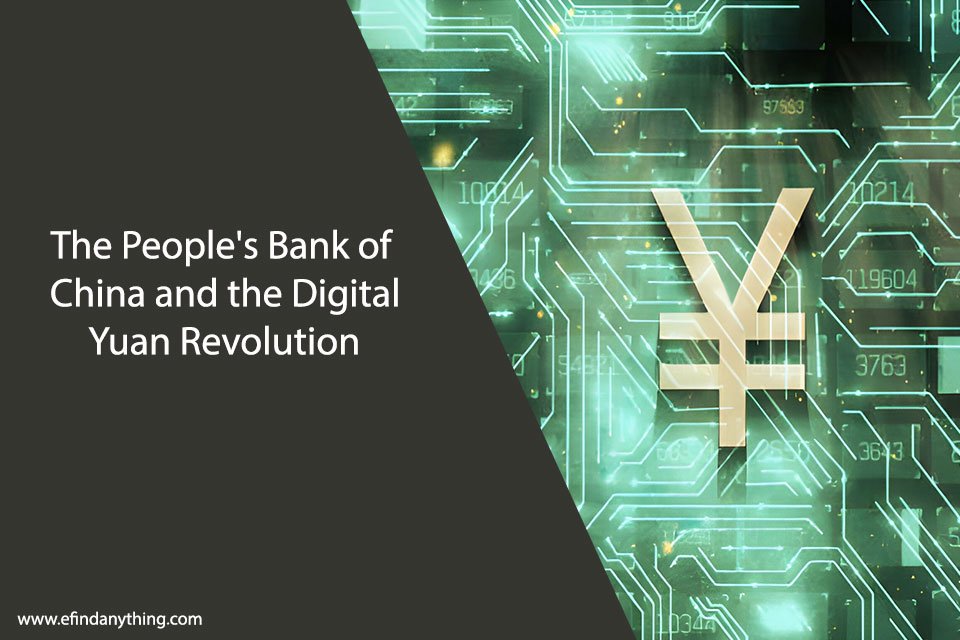
The digital revolution has transformed various aspects of our lives, and the realm of finance is no exception. One of the most significant developments in the financial world is the advent of digital currencies, and among them, the Digital Yuan stands out as a pioneering project by the People’s Bank of China (PBOC). In this article, we will delve deep into the Digital Yuan, exploring its origins, workings, impact on traditional banking, international implications, privacy and security concerns, adoption rates, and its potential to reshape the global financial landscape. Additionally, if you want to know more about investments and firms, you may click this and explore the site.
Table of Contents
The Birth of the Digital Yuan
China’s journey towards a digital currency dates back to the early 2010s when discussions on the need for a digital counterpart to the physical renminbi began. The People’s Bank of China took on the ambitious task of creating a digital currency that could serve as an alternative to traditional cash. Their primary motivation was to reduce the reliance on paper currency, enhance payment efficiency, and gain more control over the financial system.
How the Digital Yuan Works
The Digital Yuan is built on a blockchain-based infrastructure, providing the central bank with a transparent ledger of all transactions. Unlike cryptocurrencies like Bitcoin, it is not decentralized, as the PBOC retains control over issuance and regulation. This allows for a high level of oversight, preventing illegal activities such as money laundering.
Key features of the Digital Yuan include offline transactions, support for smart contracts, and programmable money. Users can make transactions using a mobile app linked to their bank accounts. This blend of digital convenience with government oversight sets it apart from cryptocurrencies.
The Impact on Traditional Banking
The Digital Yuan has the potential to disrupt traditional banking by bypassing intermediaries in everyday transactions. While this may reduce the need for commercial banks in day-to-day payments, they could still play a crucial role in areas such as lending, investment, and financial advice. Commercial banks may need to adapt their business models to stay relevant in a world where the central bank’s digital currency is prevalent.
International Implications
China’s Digital Yuan project has significant international implications. It aims to challenge the dominance of the US dollar in global trade and finance. As the Digital Yuan gains traction, it could become a viable alternative for international transactions, reducing the need for the dollar as a reserve currency.
China’s growing influence in the digital currency space also raises geopolitical concerns. Some countries may view the Digital Yuan as a tool for expanding Chinese influence, which could lead to regulatory pushback and competition in the form of other central bank digital currencies.
Privacy and Security Concerns
While the Digital Yuan offers convenience and transparency, it also raises concerns about privacy and security. Every transaction is traceable, which could enable surveillance by the government. Striking a balance between financial innovation and individual privacy is a challenge that the PBOC must address to gain public trust.
Additionally, the Digital Yuan faces cybersecurity threats, as any digital system does. Ensuring robust security measures to protect against hacks and fraud will be crucial to maintaining the currency’s integrity.
Adoption and Future Prospects
As of the article’s writing, the Digital Yuan is being piloted in various cities across China, with increasing adoption rates. Users can receive digital yuan through a lottery system, promoting its use for everyday transactions. This gradual rollout allows the PBOC to assess and refine the currency’s functionality.
Looking ahead, the Digital Yuan could expand internationally, especially in countries participating in China’s Belt and Road Initiative. However, its success will depend on factors like regulatory acceptance, technological advancements, and its ability to gain the trust of users.
Conclusion
In conclusion, the Digital Yuan represents a groundbreaking development in the world of digital currencies. China’s ambitious project could reshape the global financial landscape by challenging the dominance of the US dollar and traditional banking systems. As the Digital Yuan continues to evolve, it will be essential to monitor its impact on various sectors, including banking, geopolitics, and individual privacy. The future of central bank digital currencies hinges on the success and lessons learned from this revolutionary endeavor.





